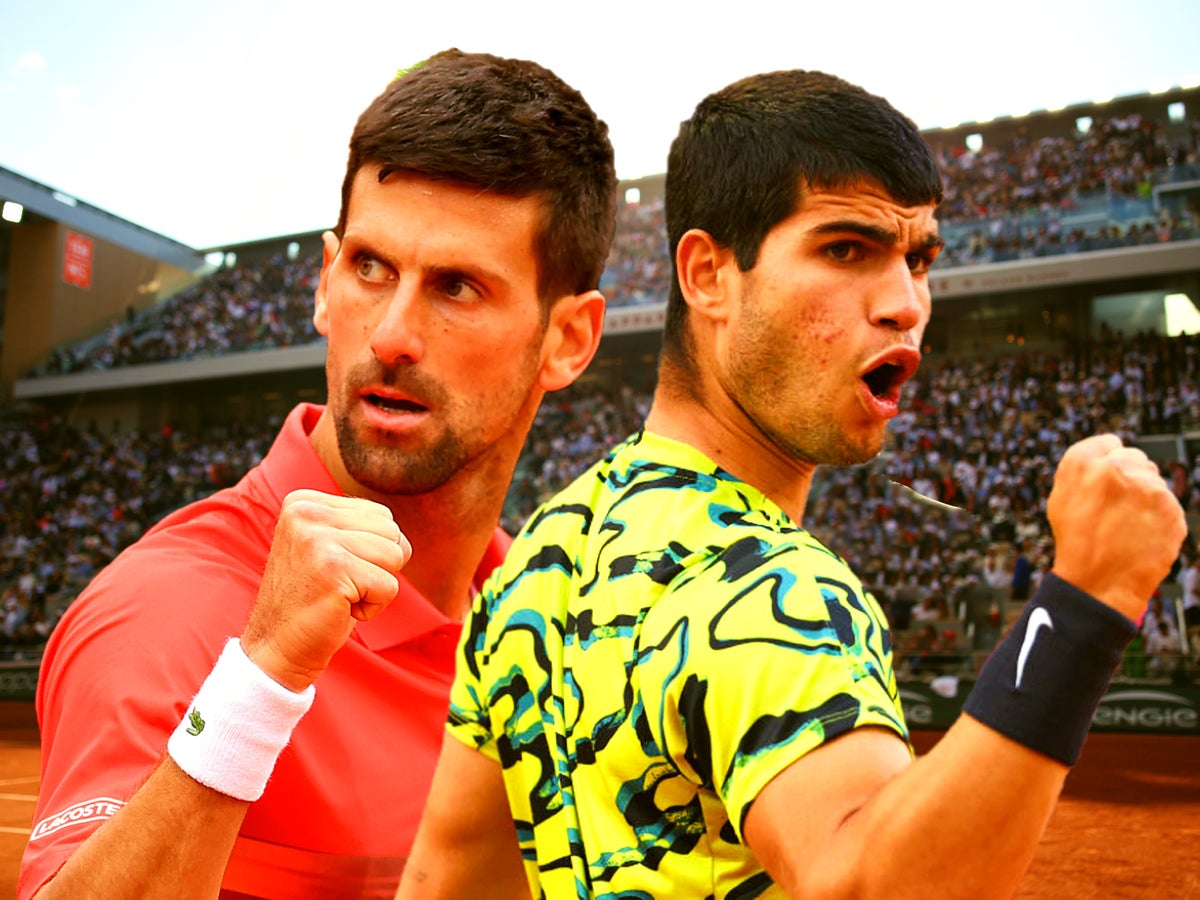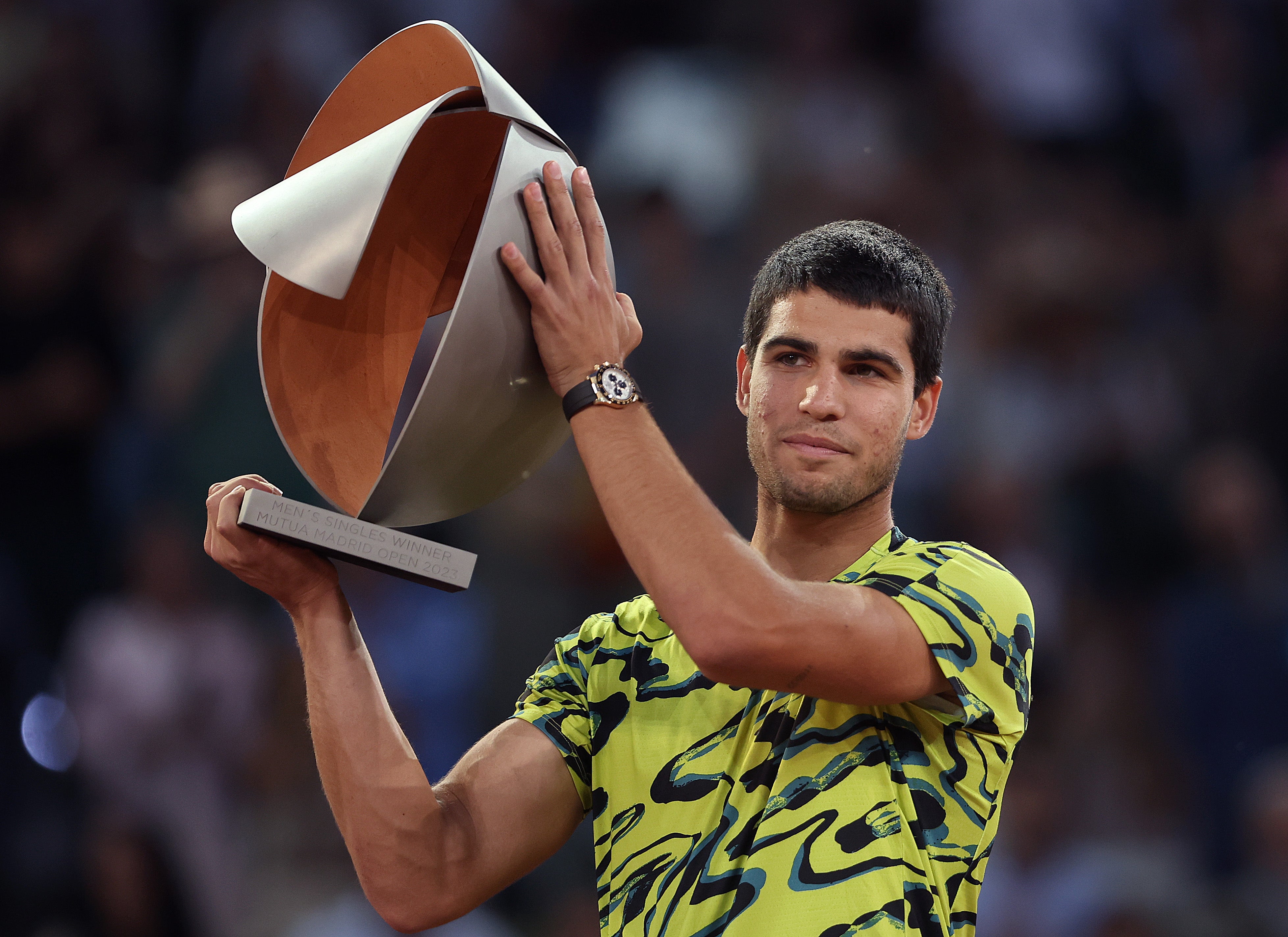
When the French Open reaches its semi-final stage at Roland Garros, 391 days will have passed since Carlos Alcaraz faced Novak Djokovic for the first time and gave tennis the shot in the arm it needed. As moments of sporting symbolism go, Alcaraz defeating Djokovic and Rafael Nadal on consecutive days on the Madrid clay, aged 18, was as clear as they come, and foreshadowed what happened next: the Spaniard winning his first grand slam at the US Open and finishing the year as the youngest world No 1 in history.
But as everything happened so quickly and Alcaraz’s star rose at an astonishing rate, something else has taken longer to materialise: the rematch.
Over the past year, Djokovic and Alcaraz have circled each other, but with their orbits barely touching. Grand slam titles and the world No 1 ranking have passed between them, but without a second meeting. Alcaraz’s US Open title came as Djokovic was unable to travel to New York, then Djokovic triumphed at the Australian Open while Alcaraz missed out due to injury. Both absences left a void that has been filled by debate: with both players reaching great highs without needing to face each other.
Thankfully, the tennis gods have replied.
At the French Open, Djokovic and Alcaraz have been drawn in the same half of the tournament. The semi-finals could stage their long-awaited second act, and the first in best-of-five sets. With Rafael Nadal absent from Roland Garros for the first time since 2005, Djokovic’s main rival at the French Open has gone from being a 37-year-old to a 20-year-old.
Djokovic can surpass Nadal on the most successful court of the Spaniard’s career with a record 23rd grand slam title. Alcaraz, though, will be the player to beat. “We’ve been saying this for years, we expected it to come,” Djokovic said, the generational shift in men’s tennis obvious for all to see. Although only a year younger than Nadal at 36, the Serbian would undoubtedly have longed for the day when the 14-time French Open champion was unable to defend his title in Paris.
Then Alcaraz arrived, and the challenge was reset.
Nadal’s shoes are impossible to fill at Roland Garros but Alcaraz has the weapons and clay-court game to step into them. “When his adrenaline goes up, he’s practically unstoppable,” Nadal said after facing Alcaraz last year, and in the time since he has grown and matured, both physically and mentally. Alcaraz may appear to be a right-handed reincarnation of Nadal, who was his idol growing up in Murcia, but he says his game is more like Roger Federer’s: all-out attack, with an aversion to risk.

Alcaraz is driven by the words of his grandfather and the three Cs: cabeza, corazón, cojones - or head, heart and balls. He had them tattooed on his arm after winning the US Open last September. If it was the latter two words that proved pivotal in his first victory over Djokovic in Madrid, a semi-final clash against the 22-time grand slam champion in Paris would represent the ultimate test of his cabeza. Djokovic’s mental toughness is his greatest asset at the grand slams and it drives his game to reach sublime levels under the highest of pressure.
At 36, Djokovic prioritises the grand slams and will not be concerned about arriving at the French Open without winning a title on clay this season, even as the 19-year-old Holger Rune announced himself as a contender for Roland Garros with his stunning quarter-final win in Rome last week. Rune has now won his last two meetings with Djokovic; add in Alcaraz’s Madrid win and Djokovic is on a losing run against the two brightest stars of the next generation. “I’m personally still trying to hang in there with them all,” said Djokovic after Rome.
But best -of-five sets is a different game and Djokovic knows it. The reality is the Serbian has been breaking the will of the next generation for years at the grand slams. Just ask Stefanos Tsitsipas or Alexander Zverev, who have both lost all three matches they have played against Djokovic over best-of-five. In the past three years, only Nadal and Daniil Medvedev in the 2021 US Open final have beaten Djokovic at a grand slam. “I think it’s also good for our sport that we have new faces, new guys coming up,” said Djokovic, but he is as determined as ever to remain at the top.

The hype and excitement around Alcaraz is different, however, partly fuelled by the parallels with Nadal and the symbolism of the 20-year-old potentially succeeding him as French Open champion. You only get one first grand-slam meeting, and Alcaraz facing Djokovic in the semi-finals at Roland Garros could in time be remembered as being as significant as Nadal beating Federer on his way to winning his maiden French Open title in 2005.
But that would be getting too far ahead: there are two long weeks to go until Djokovic and Alcaraz could finally stand on opposite sides of the net, and there are recent examples of the second meeting of this rivalry being burned at short notice. While Djokovic and Alcaraz have only appeared at the same tournament five times since last year’s Madrid Open, one has always fallen earlier than expected.
That won’t last forever – and Roland Garros would be the perfect time for the spell to break.







